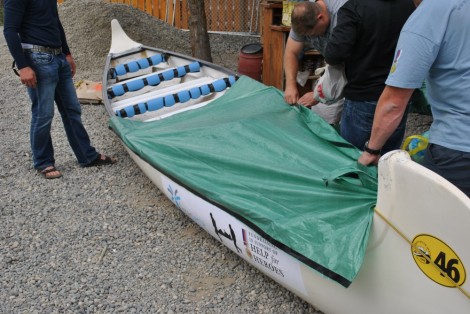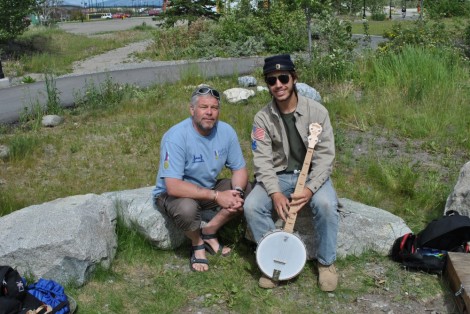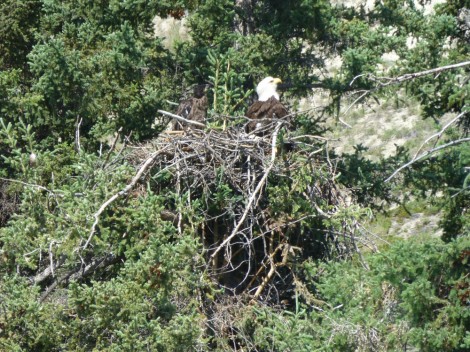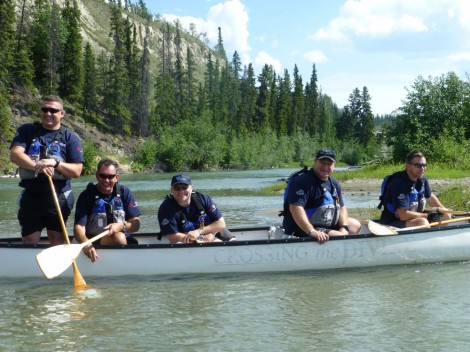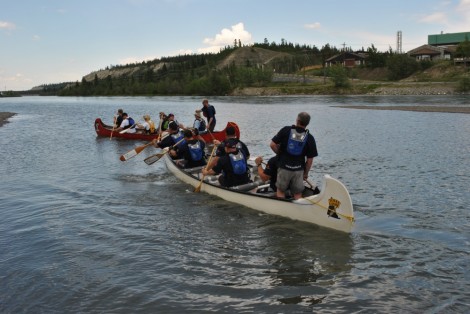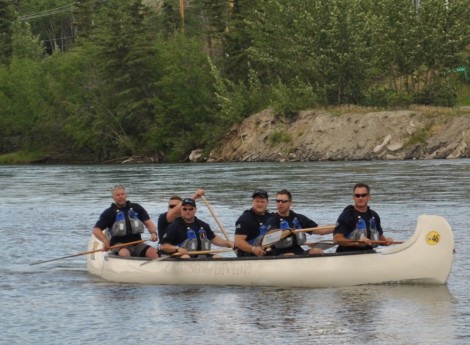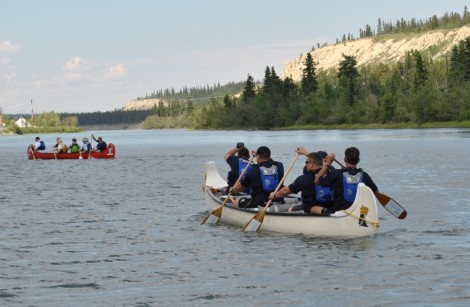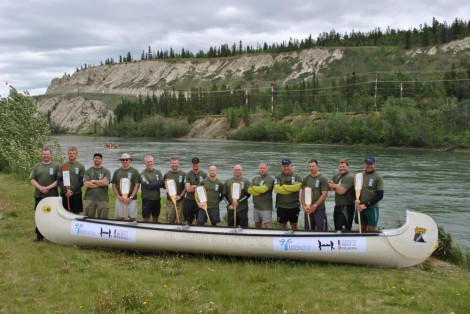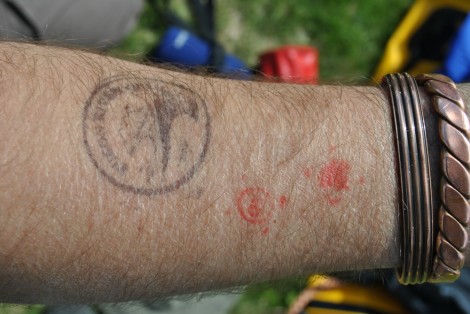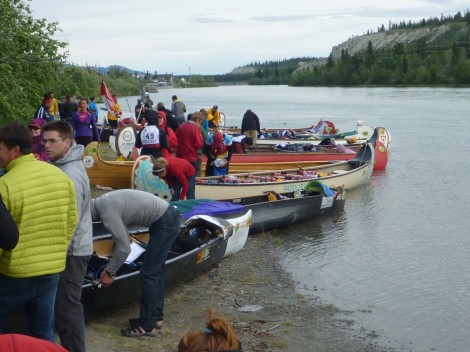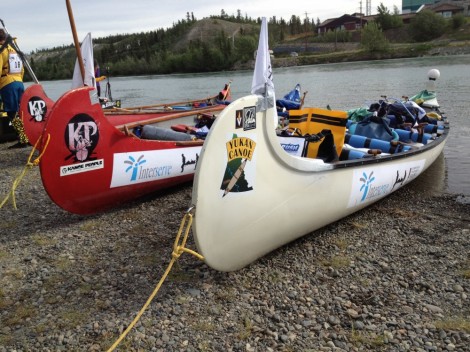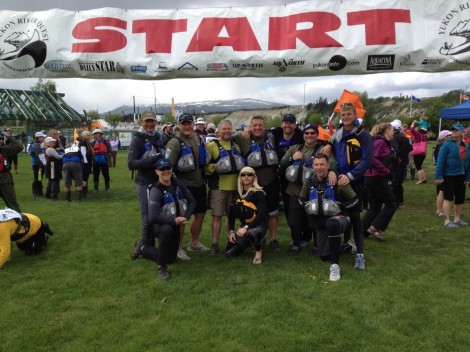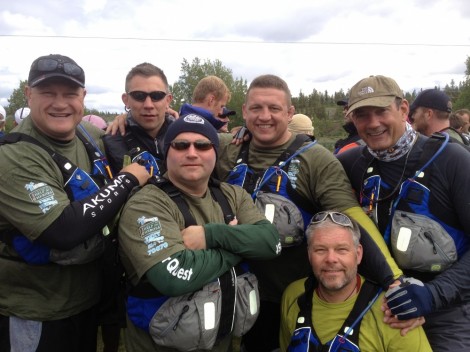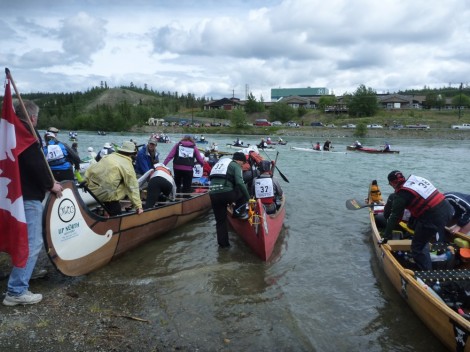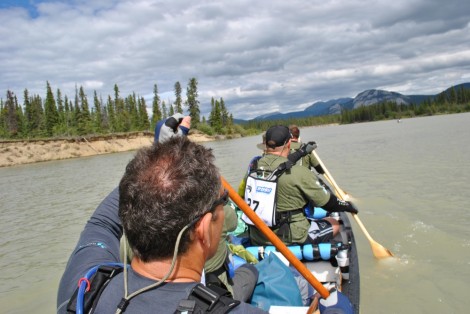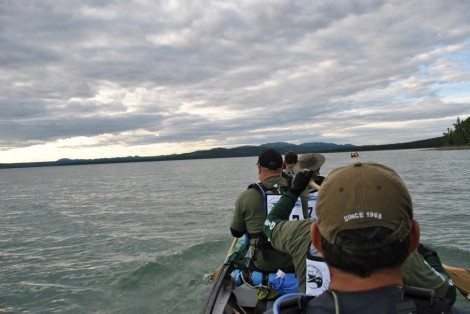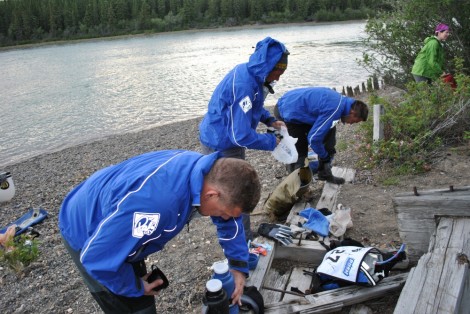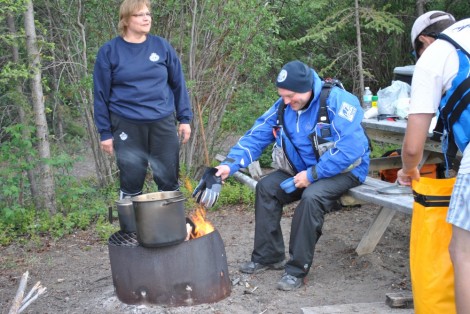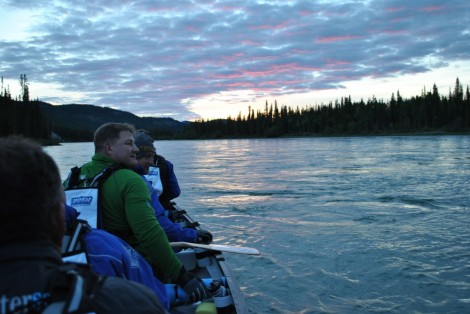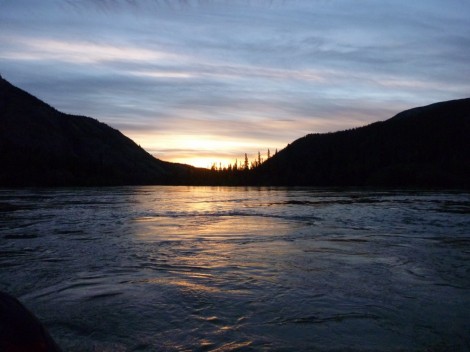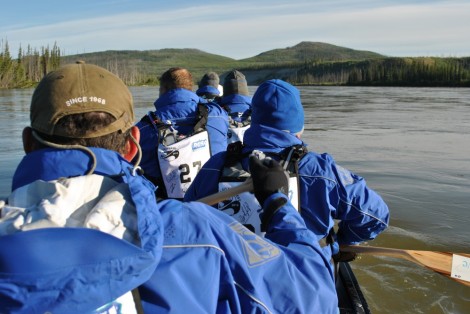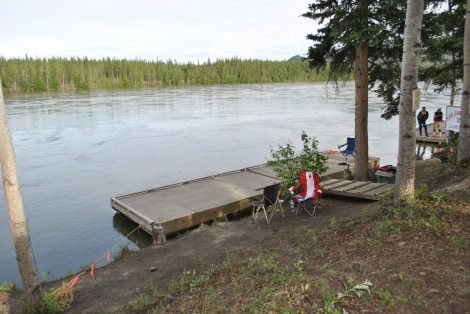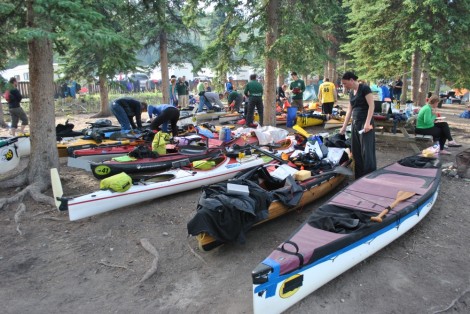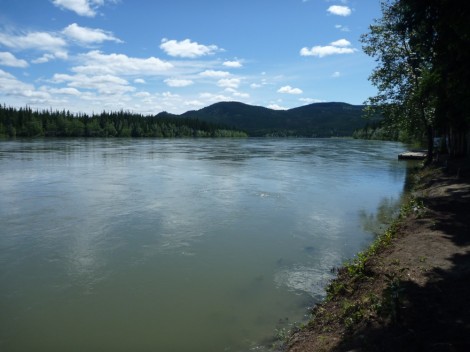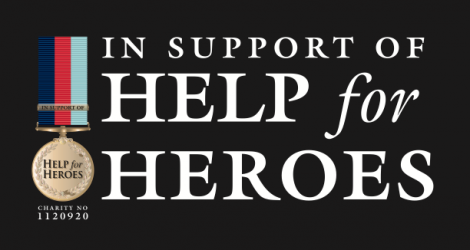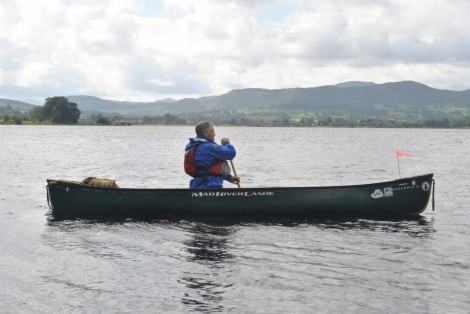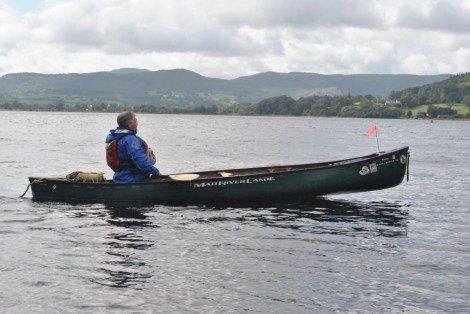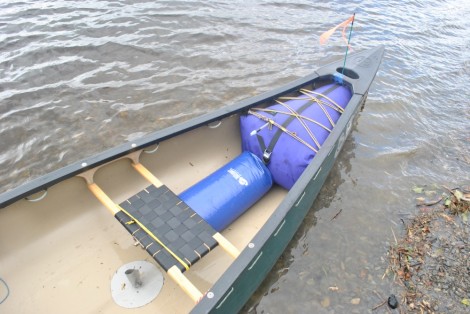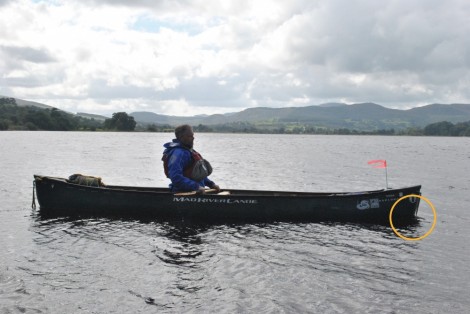The Year Long Day
So let me get this right, your flying out to the far north of Canada to take part in one of the worlds toughest canoe races, paddling 450 miles, day and night, with little food or rest, with a team of Rugby coaches who aren’t paddlers, that you’ve only met once before and have never paddled together as a team?
Yep, sure am!
Your mad, tapped, insane or simply stupid!
That along with a few other niceties or rather obscenities were the usual comments I received from people when I told them the challenge I was about to embark on.
We were on our way to take part in this years Yukon River Quest, Race to the Midnight Sun which you can find out more about by reading THIS previous blog article.
Finally we arrived in Whitehorse, Yukon after a twelve hour flight delay, a night in a hotel at Vancouver airport and plenty of eating and drinking! The view from the aircraft window on its way in was stunning, flying over snow capped mountains and as we drew closer flying along the mighty Yukon itself.
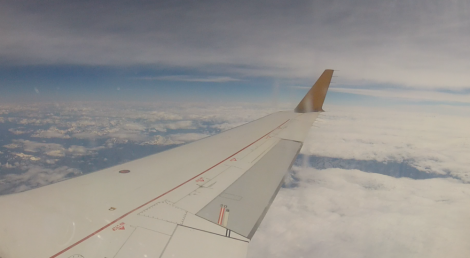
As we were now a day late in arriving we set to work quickly identifying our boat at the local outfitters, Kanoe People and making any needed alterations or repairs to it. One thing thing in particular that did take some time and effort was the construction of some sort of spray deck in case we encountered choppy conditions during the Lake Laberge crossing or more likely to prevent swamping whilst negotiating Five Finger Rapids. Quite a daunting task producing a spray deck for a 30 ft Voyageur Canoe, never the less the team addressed it and were justifiably proud of their work. Meanwhile others busied themselves about town getting last minute bits of kit we needed and of course food and drink for the race. The Super stores in Whitehorse were quite interesting with everything from shower gel and toilet roll at one end of the store to bear decoys, semi automatic rifles and ammunition at the other end! Tesco you still have some way to go to match this !!
In between all the hustle and bustle of the race prep was also the opportunity to take our boats and paddles for a test drive. This came in the form of a few little trips in the local area. During these we practiced a number of scenarios including man overboard, should I slip off the boat leaving them without a steersman. I was hoping we wouldn’t need this for real as I ended up spending quite some time floating around as the boat and crew disappeared into the distance before making some valiant efforts to regain control and steer themselves in my direction! Another drill that was rehearsed lots was that of changing paddling sides. Might sound easy but when you have a boat full of rather large rugby boys moving around in a canoe at the same time then it’s bound to end in tears unless you have a plan. On one such occasion we were lucky to see the first of many bald eagles on our trip, on its nest with its young. The novelty of numerous eagle sightings soon faded for some.
Another important task was that of sorting out our food for the journey. Some of the team visited the local stores and others set about preparing some meals. During one such occasion members from the other team had taken over the support vehicle and turned it into some form of soup kitchen. We had all opted to source our own snacks etc and I had chosen various nuts, raisons, chocolate and jelly sweets together with some fruit and energy bars, all of which were hung from a thwart in front of me in plastic tubs. These tubs were provided or rather acquired courtesy of our hotel, where they were meant to be used for ice from the ice machine. Incidentally they made great on board toilets!
Time was soon upon us and it was the day before race day. Briefs had to be attended and the first of many kit checks took place. After having had our team details, entry form and insurance checked we acquired a number of ink stamps on my arm entitling us to a River Quest Race pack.
This contained among other things a YRQ-shirt, our race bibs with our all important team number printed on them and a couple of stickers for our boat. We were to be team 27. After we had all signed every bib on both the back and front it was off for an official team photo proudly wearing both our t-shirt and bib as requested by the officials. One half of this bib has to be returned either on completion or if you withdraw from the race as a way of accounting for everyone.
That night it felt a bit like the last supper as we sat together as a team and ate a hearty meal. Then with race day looming the following morning it was off to bed to dream of the events to come, knowing that this would be our last chance for sleep for over 25 hours!
Race day
Our boat and our team had to be ready at the launch point for another kit check at 0730. At this point our official team mascot was added to our boat, which looked remarkably like the character Wilson from the film Castaway staring Tom Hanks.
Once this was out of the way then it was off for some breakfast and a chill before the 1200 start.
Racers all started to converge from around 1100 at the start area. All the teams were announced and introduced, lots of good luck wishes exchanged and photos under the official start line taken. 4,3,2…1 the air horn sounded and we were off. We now had 14 hours to reach the end of the Lake, 35 hours to get to Carmacks, and 84 hours to get to Dawson. For some this truly was to become the year long day!
All teams jogged or walked their way down to their boats before launching, remembering that this was only 400m of 450 miles! The turn out by the locals was quite surprising with lots of cheers, whoops, whistles and shouts of “Yukon”and camera action.
 That was it we were on our way, next stop the old Coal mine camping ground at Carmacks which would be around 210 miles later and would hopefully take us about 24 hours. Conditions were the best they had seen in years with good weather and high river levels. After a couple of hours we seemed to loose all the hustle and bustle and settled down to a steady rhythm and just the odd couple of boats around us as we entered the start of Lake Laberege and passed the first of 5 check points before Carmacks. These CP’s are all manned and act as safety to give help when needed and also to record the times of racers before sending them on via sat phones to the Comms centre were they are updated and posted on the race website.
That was it we were on our way, next stop the old Coal mine camping ground at Carmacks which would be around 210 miles later and would hopefully take us about 24 hours. Conditions were the best they had seen in years with good weather and high river levels. After a couple of hours we seemed to loose all the hustle and bustle and settled down to a steady rhythm and just the odd couple of boats around us as we entered the start of Lake Laberege and passed the first of 5 check points before Carmacks. These CP’s are all manned and act as safety to give help when needed and also to record the times of racers before sending them on via sat phones to the Comms centre were they are updated and posted on the race website.
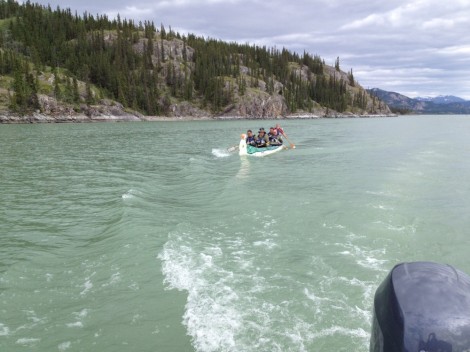 As well as these CP’s there are also a number of Safety Monitoring points or MP’s on route, which again are manned, they quite often have fires burning and hot drinks,for racers to warm up. There was to be 3 of these MP’s between us and Carmacks which proved very useful.
As well as these CP’s there are also a number of Safety Monitoring points or MP’s on route, which again are manned, they quite often have fires burning and hot drinks,for racers to warm up. There was to be 3 of these MP’s between us and Carmacks which proved very useful.
The crossing of the lake took us around 8 hours in excellent conditions meaning we arrived at CP3 Lower Laberge at around 2215 well ahead of the cut off time of 0200. As the temperature was quickly dropping with the sun low in the sky we made the decision to change from daytime light weight clothing into thermals, topped off with our brilliant Palm Aegean cags and Viper pants. Great combination, lots of room inside with freedom of movement and easy to get on and off quickly. After a quick warm up by the fire for a couple of the team and some food it was time to get paddling again.
The temperature continued to drop as we paddled on down the section knows as The 30 Mile River. By now the light was fading but as the name says its the “Race to the midnight sun” and sure enough at midnight we were presented with a stunning sky. 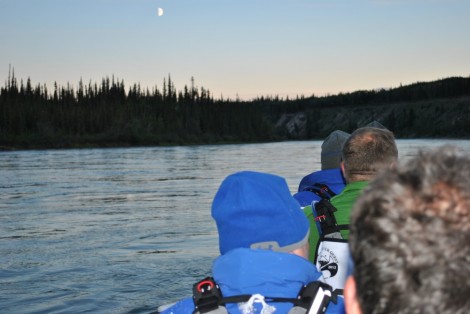
Our next point of interest was MP2 Lower 30 Mile which is around 40km after leaving the lake. The names of the locations we passed made me smile with such things as “Gold diggers point, Klondike Bend, Fish Eddy and Shipyard Island” The scenery by now was very much the same with little if any change from steep banks and pine trees. I was eagerly awaiting us passing the spot where the Teslin River would join us and hopefully give us a bit of a helping hand. The Teslin came and went with no apparent noticeable difference, the temperature dropped more, and we were reminded by a passing paddler “that coldest time yet to come would be around 0500”! Cosmic I thought, I cant wait for it!
By the time we reached MP3 just down stream of where the Big Salmon River joined us, it was definitely daylight and still a tad cool. So we took the decision to stop here and spend sometime re-warming in front of the fire as a number of the crew were starting to feel the effects of cold together with a lack of food and sleep. It was here that Team 1 who were by now ahead of us had also stopped and gave first aid to a fellow racer who was suffering badly from exhaustion and hypothermia. We had been warned by officials at the race briefs that “hypothermia accounts for more than half of all crews that fail to finish, and that on cold years more than 50% of racers will suffer from hypothermia”.
We set off once again and paddled our way down the river. For what seemed like an eternity at one point we paddled through what remained of a huge forest which had been burnt to the ground, it really was mind numbing. By being at the stern of the boat and having to concentrate on steering and keeping an eye on the navigation kept me more than occupied and definitely gave me a focus helping to pass the time, prevent boredom and ultimately the potential to fall asleep. As for wild life well we didn’t really see much aside from the odd eagle, however during the journey back to Whitehorse by vehicle there were moose, wolves and bears to name but a few. Apparently they use the highways just like us to get around.
At around 0900 after having been paddling for over 21 hours and a short distance after the Little Salmon joined form the right, we eventually passed our last check point before Carmacks. From here we knew had around a further 4-6 hours of paddling until will reached the sanctuary of Carmacks where we would have a compulsory 7 hour stop. A chance for a hot shower, some food and a well earn’t sleep before tackling the remainder of our Yukon Quest.
This last couple of hours leading up to our arrival at Carmacks proved to be a real challenge. Some of the team were now really starting to suffer and hallucinations had taken over with sightings of giant beetles, knights in armor, chimpanzees and goblins all on the river bank along side. On a number of occasions crew members even nodded of whilst still paddling. I was unaware of exactly how severe the situation had become, but I did know that I had to get the canoe and its crew safely to Carmacks.
The journey seemed to take for ever, as we turned a corner only to find yet another corner loomed ahead. With an hour or so to go I got out our sat phone and made a call to our support crew at Carmacks. I made a point of letting them know we where not far and that hot food was the order of the day for all of us as soon as we arrived. However un-be-known to my team was the fact that my signal had cut out after only 20 seconds and that I had decided to keep talking pretending to have communications so as not to unsettle them any further. Another memorable occasion was when a team member stated that “I’m sure we’ve been past this before, are you sure were going the right way?” I must say for moment he even cast doubt in mind and could have caused a mutiny. I did have a moment when I feared I may have been thrown over board.
As we neared Carmacks the map and our race briefs clearly mentioned an overhead cable across the river which is approximately 2km from the campsite, and after which you are advised to keep far right so as to avoid missing the pontoon. After announcing in a very calm manner that we now had only a very short distance to the landing it again seemed to take an age. Moral was high with the thought of food and rest but to my horror as we turned yet another corner I was greeted with what I thought was another overhead cable! My heart sank as I reluctantly announced I had made a navigation error and in fact we still had 2 km to go, not a good feeling to have! But all to soon it became apparent that I was right the first time as the Old Coal mine camping ground rapidly approached. Officials were waiting our arrival and barking incoherent instructions at us. At around 1500 with a loud thud, a big wobble and after more than 27 hours of paddling we finally arrived at Carmacks.
Our next problem was getting out of the boat as we were all somewhat wobbly form our adventure. As officials helped us from the boat it became apparent the toll it had taken on us. We all took some time to compose ourselves and get our thoughts whilst support crew and officials busied themselves helping those that needed it and giving us all a good check over.
A few minutes later some race officials called us together and announced that on the grounds of safety we were being “scratched”! Scratched is the YRQ term for being withdrawn. We were all deeply upset but fully understood the reasons behind their decision.
This really had felt like a year long day….
After some food and a hot shower and as we de-rigged our canoe team 1 surfaced from their slumber, had some breakfast, reloaded their boat and set off on the next phase of their adventure. Around 30 hours later they triumphantly crossed the finish line at Dawson in a time of 54 hours. A very well deserved congratulations to Team 1 for completing such a grueling event.
I am glad to say that we are all now back to fitness and going about life as normal. Not forgetting our overall aim of doing this challenge was to raise money for our chosen charity Help for Heroes, and I believe to date both teams together managed to meet their target and raise £100,000
Q: Did I enjoy it?
A: Yes a fantastic experience
Q: Would I do it again?
A: Next years race beckons to me and Im already looking at flights etc. After all I cant leave an unfinished chapter in my life. Bring on Yukon River Quest 2013!
A big thank you to my enduring companions on this trip, who were Toby Booth, Justin Bishop, Neil Hatley, Gavin Cleave and Tony Cilia and to Davis St John Claire who had the thankless task of being our support crew. Thanks also Interserve for making it happen.
Lastly a special thanks goes out to Palm Equipment, Desperate Measures, Rab and Outdoor Active for their help and support throughout.
Hasta la vista…. I’ll be back !!
See you on the water…
Jules
Bespoke Canoe Coaching, Guiding, Safety & Rescue training and BCU awards











